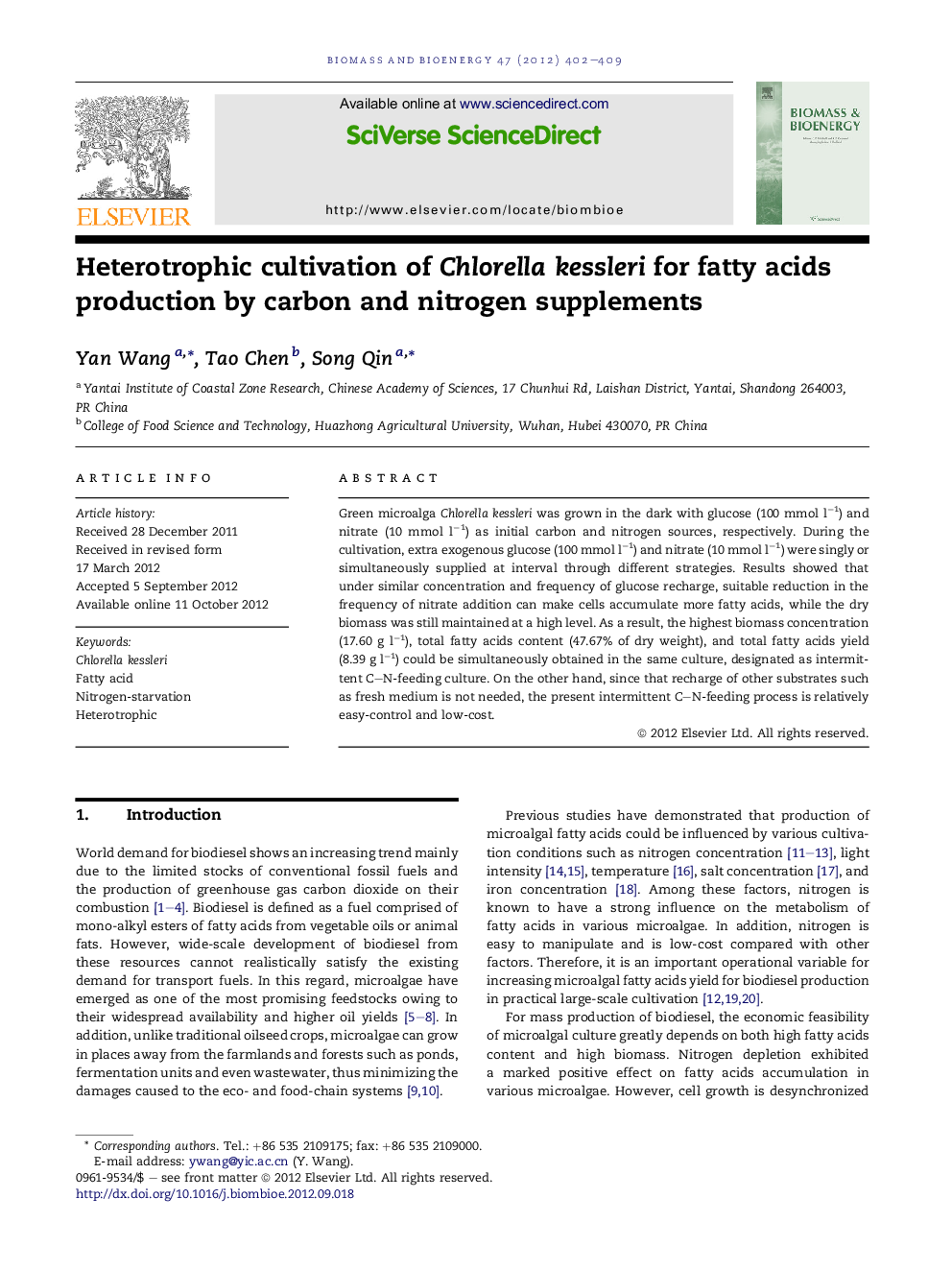| Article ID | Journal | Published Year | Pages | File Type |
|---|---|---|---|---|
| 677296 | Biomass and Bioenergy | 2012 | 8 Pages |
Green microalga Chlorella kessleri was grown in the dark with glucose (100 mmol l−1) and nitrate (10 mmol l−1) as initial carbon and nitrogen sources, respectively. During the cultivation, extra exogenous glucose (100 mmol l−1) and nitrate (10 mmol l−1) were singly or simultaneously supplied at interval through different strategies. Results showed that under similar concentration and frequency of glucose recharge, suitable reduction in the frequency of nitrate addition can make cells accumulate more fatty acids, while the dry biomass was still maintained at a high level. As a result, the highest biomass concentration (17.60 g l−1), total fatty acids content (47.67% of dry weight), and total fatty acids yield (8.39 g l−1) could be simultaneously obtained in the same culture, designated as intermittent C–N-feeding culture. On the other hand, since that recharge of other substrates such as fresh medium is not needed, the present intermittent C–N-feeding process is relatively easy-control and low-cost.
► Heterotrophic Chlorella kessleri as fatty acids/biodiesel producer. ► Strategy of improving both algal growth and fatty acids accumulation. ► Positive results in algal fatty acid profiles by intermittent nitrogen-starvation.
